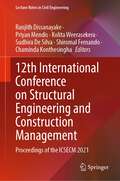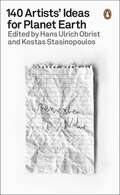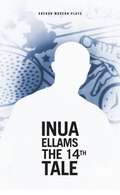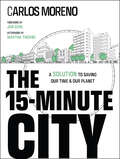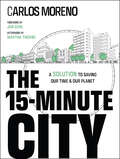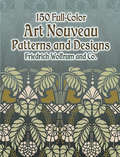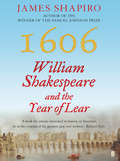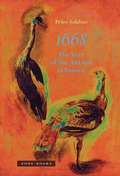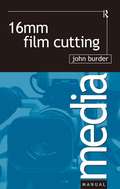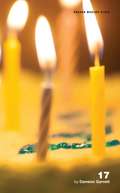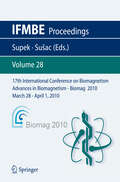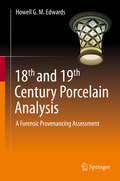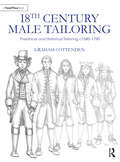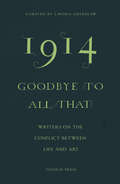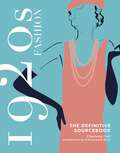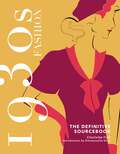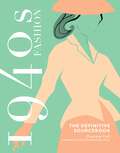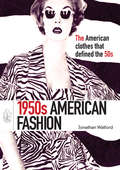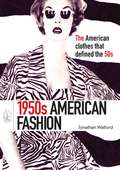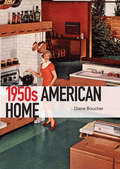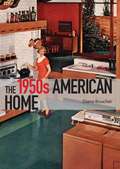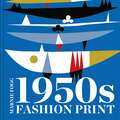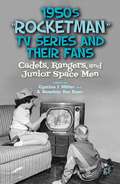- Table View
- List View
12th International Conference on Structural Engineering and Construction Management: Proceedings of the ICSECM 2021 (Lecture Notes in Civil Engineering #266)
by Ranjith Dissanayake Priyan Mendis Kolita Weerasekera Sudhira De Silva Shiromal Fernando Chaminda KonthesinghaThis book highlights advances in the fields of civil engineering and construction industry with a particular focus on Structural Engineering and Construction Management. This book consists of top quality and innovative research papers selected from the proceedings of the 12th ICSECM 2021 under the themes of Innovations in Building Materials, Construction Management, Tall buildings, Concrete Technology and High Performance concrete, Geotechnical Engineering, Water and Waste Water Treatment, CKDu problem in Sri Lanka, Structural Health Monitoring & Design of Resistive Structures, Disaster Risk Reduction and Resilience in the Built Environment, Fibre Reinforced Polymer, Life Cycle Assessment of Buildings and Fire Safety Engineering.
140 Artists’ Ideas for Planet Earth
by Hans Ulrich Obrist Kostas StasinopoulosThrough 140 drawings, thought experiments, recipes, activist instructions, gardening ideas, insurgences and personal revolutions, artists who spend their lives thinking outside the box guide you to a new worldview; where you and the planet are one.Everything here is new. We invite you to rip out pages, to hang them up at home, to draw and scribble, to cook, to meditate, to take the book to your nearest green space.Featuring Olafur Eliasson, Etel Adnan, Alexis Pauline Gumbs, Jane Fonda & Swoon, Judy Chicago, Black Quantum Futurism Collective, Vivienne Westwood, Cauleen Smith, Marina Abramovic, Karrabing Film Collective, and many more.
The 14th Tale (Oberon Modern Plays Ser.)
by Inua Ellams'The 14th Tale is a beautiful mellifluous narrative that tells the hilarious exploits of a natural born mischief, growing from the clay streets of Nigeria to rooftops in Dublin and finally to London.
The 15-Minute City: A Solution to Saving Our Time and Our Planet
by Carlos MorenoA fresh and innovative perspective on urban issues and creating sustainable cities In The 15-Minute City: A Solution for Saving Our Time and Our Planet, human city pioneer and international scientific advisor Carlos Moreno delivers an exciting and insightful discussion of the deceptively simple and revolutionary idea that everyday destinations like schools, stores, and offices should only be a short walk or bike ride away from home. This book tells the story of an idea that spread from city to city, describing a new way of looking at living that addresses many of the most intractable challenges of our time. Hundreds of mayors worldwide have already embraced the concept as a way to help recover from the pandemic, and the idea continues to gain speed. You'll learn why more and more cities are planning to make cars far less necessary for contemporary city-dwellers and how they're planning to achieve that goal. You'll also find: Strategies for cities to recover and adapt to benefit residents, saving them precious time Techniques to change the habits of automobile-dependent city residents and maximize social benefits of living in a human-centric city Scientifically developed, research-backed solutions for enduring urban issues and problems Deeply committed to science, progress, and creativity, Moreno presents an essential and timely resource in The 15-Minute City, which will prove invaluable to anyone with an interest in modern and innovative approaches to consistently challenging urban issues that have bedeviled policy makers and city residents since the invention of the car.
The 15-Minute City: A Solution to Saving Our Time and Our Planet
by Carlos MorenoA fresh and innovative perspective on urban issues and creating sustainable cities In The 15-Minute City: A Solution for Saving Our Time and Our Planet, human city pioneer and international scientific advisor Carlos Moreno delivers an exciting and insightful discussion of the deceptively simple and revolutionary idea that everyday destinations like schools, stores, and offices should only be a short walk or bike ride away from home. This book tells the story of an idea that spread from city to city, describing a new way of looking at living that addresses many of the most intractable challenges of our time. Hundreds of mayors worldwide have already embraced the concept as a way to help recover from the pandemic, and the idea continues to gain speed. You'll learn why more and more cities are planning to make cars far less necessary for contemporary city-dwellers and how they're planning to achieve that goal. You'll also find: Strategies for cities to recover and adapt to benefit residents, saving them precious time Techniques to change the habits of automobile-dependent city residents and maximize social benefits of living in a human-centric city Scientifically developed, research-backed solutions for enduring urban issues and problems Deeply committed to science, progress, and creativity, Moreno presents an essential and timely resource in The 15-Minute City, which will prove invaluable to anyone with an interest in modern and innovative approaches to consistently challenging urban issues that have bedeviled policy makers and city residents since the invention of the car.
150 Full-Color Art Nouveau Patterns and Designs (Dover Pictorial Archive)
by Friedrich Wolfrum Co.The novelty of Art Nouveau derived in part from its innovative approach to the very concept of art. More than just a style, it eliminated the barriers between fine and applied arts and embodied a new way of thinking about modern society and production methods. Art Nouveau attempted nothing less than the redefinition of the meaning and nature of art.This multipurpose treasury features luxuriant patterns and designs that date from the early twentieth century, the heyday of Art Nouveau. Featuring both allover patterns and stand-alone designs, it consists of 49 full-page illustrations, plus eleven pages with numerous individual images. Handsomely reproduced from a rare Viennese publication, this inexpensive volume offers a sumptuous assortment of authentic designs from a revolutionary art movement.
1606: William Shakespeare and the Year of Lear
by James Shapiro1606: William Shakespeare and the Year of Lear traces Shakespeare's life and times from the autumn of 1605, when he took an old and anonymous Elizabethan play, The Chronicle History of King Leir, and transformed it into his most searing tragedy, King Lear. 1606 proved to be an especially grim year for England, which witnessed the bloody aftermath of the Gunpowder Plot, divisions over the Union of England and Scotland, and an outbreak of plague. But it turned out to be an exceptional one for Shakespeare, unrivalled at identifying the fault-lines of his cultural moment, who before the year was out went on to complete two other great Jacobean tragedies that spoke directly to these fraught times: Macbeth and Antony and Cleopatra.Following the biographical style of 1599, a way of thinking and writing that Shapiro has made his own, 1606: William Shakespeare and the Year of Lear promises to be one of the most significant and accessible works on Shakespeare in the decade to come.
1668: The Year of the Animal in France (Zone Bks.)
by Peter SahlinsPeter Sahlins’s brilliant new book reveals the remarkable and understudied “animal moment” in and around 1668 in which authors (including La Fontaine, whose Fables appeared in that year), anatomists, painters, sculptors, and especially the young Louis XIV turned their attention to nonhuman beings.At the center of the Year of the Animal was the Royal Menagerie in the gardens of Versailles, dominated by exotic and graceful birds. In the remarkable unfolding of his original and sophisticated argument, Sahlins shows how the animal bodies of the menagerie and others (such as the dogs and lambs of the first xenotransfusion experiments) were critical to a dramatic rethinking of governance, nature, and the human.The animals of 1668 helped to shift an entire worldview in France — what Sahlins calls Renaissance humanimalism — toward more modern expressions of Classical naturalism and mechanism. In the wake of 1668 came the debasement of animals and the strengthening of human animality, including in Descartes’s animal-machine, highly contested during the Year of the Animal.At the same time, Louis XIV and his intellectual servants used the animals of Versailles to develop and then to transform the symbolic language of French absolutism. Louis XIV came to adopt a model of sovereignty after 1668 where his absolute authority is represented in manifold ways with the bodies of animals and justified by the bestial nature of his human subjects.1668: The Year of the Animal in France explores and reproduces the king’s animal collections — in printed text, weaving, poetry, and engraving, all seen from a unique interdisciplinary perspective. Sahlins brings the animals of 1668 together and to life as he observes them critically in their native habitats — within the animal palace itself by Louis Le Vau, the paintings and tapestries of Charles Le Brun, the garden installations of André Le Nôtre, the literary work of Charles Perrault and the natural history of his brother Claude, the poetry of Madeleine de Scudéry, the philosophy of René Descartes, the engravings of Sébastien Leclerc, the trans_fusion experiments of Jean Denis, and others.The author joins the non_human and human agents of 1668 — panthers and painters, swans and scientists, weasels and weavers — in a learned and sophisticated treatment that will engage scholars and students of early modern France and Europe and readers broadly interested in the subject of animals in human history.
16mm Film Cutting (Media Manuals Ser.)
by John BurderThe film editor can make or break a film. What ends up on the cutting room floor, and why? 16mm Film Cutting is a step-by-step guide to film cutting which shows you how to achieve professional results.The practical side of the editor's job is clearly described and illustrated; breaking down rushes and making a simple join, identifying shots, first assembly, avoiding errors, preparing special effects, instructing the labs, compiling sound tracks and all the other stages in producing the final film. 16mm Film Cutting is an indispensable aid to editors and assistants working in all areas of 16mm film production.
16mm Film Cutting
by John BurderThe film editor can make or break a film. What ends up on the cutting room floor, and why? 16mm Film Cutting is a step-by-step guide to film cutting which shows you how to achieve professional results.The practical side of the editor's job is clearly described and illustrated; breaking down rushes and making a simple join, identifying shots, first assembly, avoiding errors, preparing special effects, instructing the labs, compiling sound tracks and all the other stages in producing the final film. 16mm Film Cutting is an indispensable aid to editors and assistants working in all areas of 16mm film production.
17 (Oberon Modern Plays Ser.)
by Dameon GarnettLet’s celebrate, right now, shall we? The cake’s ruined, but we’ve got the ashes. 17 candles on the ashes of my fucking life...' At seventeen years old, Scott is facing a future that is as uncertain as his past. The death of his adopted mother throws his life into chaos, and now he finds himself having to fit in with a new aspirational family, and the birth-mother he never knew. Class differences soon reach fever pitch, and guilt has the winning hand. Whoever thought change would be this difficult, and what is Scott hiding under the bed?
17th International Conference on Biomagnetism Advances in Biomagnetism - Biomag 2010 - March 28 - April 1, 2010: Biomag March 28 - April 1, 2010 (IFMBE Proceedings #28)
by Selma Supek Ana Susac40th anniversary of "medical uses of SQUID" th It is my great pleasure and honor to invite you to the 17 International Conference on Biomagnetism – Biomag2010 held in Dubrovnik, Croatia from Sunday, March 28 through Thursday, April 1, 2010. The interdisciplinary field of biomagnetism includes dynamic and evolving SQUID-based technologies offering advanced real-time methods for noninvasive assessments of magnetic signals from the brain, heart and other organs as well as a range of modeling, mathematical and computational methods for functional source localization approaches. Excellent spatial resolution and unique, millisecond, temporal resolution of biomagnetic techniques allow insights into cortical neurodynamics and neurobiological basis of the human brain as well as assessment of heart and other organs functions in health and disease. Biomag2010 will be a great opportunity for an exchange of ideas and presentation of the latest developments in instrumentation, modeling approaches, basic and clinical biomedical studies. We are particularly proud to announce the celebration of the 40th anniversary of the first SQUID-based MCG measurements published on April 1, 1970. Since then ''medical uses of SQUID'' were dynamic and growing, including the most recent developments, in combination with a low field MRI, toward a ''direct neuronal imaging''. Dubrovnik, the host city of the Biomag2010, a jewel on the Adriatic, will be a superb and stimulating setting for both scientific and social aspects of this meeting. I am looking forward to hosting you in Dubrovnik, Croatia in spring of 2010.
18th and 19th Century Porcelain Analysis: A Forensic Provenancing Assessment
by Howell G. EdwardsThis book addresses the contributions made by analytical chemistry to the characterisation of 18th and early 19th Century English and Welsh porcelains commencing with the earliest reports of Sir Arthur Church and of Herbert Eccles and Bernard Rackham using chemical digestion techniques and concluding with the most recent instrumental experiments, which together span more than a hundred years of study. From the earliest experiments which required necessarily the sacrifice of significant portions of each specimen, which may already have been damaged , to the latest experiments which needed only microsampling or the non-destructive interrogation of valuable perfect specimens a comprehensive survey is undertaken of more than twenty manufactories of quality porcelains. The correlation is made between the quantitative elemental oxide determinations of the scanning electron microscopic diffraction and Xray fluorescence data and the qualitative molecular spectroscopic Raman data to demonstrate their complementarity and use in the holistic forensic assessment of the origin of the fired procelains ; this will form the groundwork for the adoption of analytical techniques for the attribution of unknown or questionable procelains to their potential source factories . The book will also examine the perception of what constitutes a porcelain and its definitions and examines the assignment of porcelains to types which currently employs the definitions of hard paste , soft paste , hybrid , magnesian and bone china from the conclusions derived from the analytical data and a consideration of the raw materials employed in their manufacturing processes. During the discussion of this analytical evidence several themes and protocols have been established for its utilisation in the potential identification of porcelains and several case studies undertaken for this purpose are cited. The book will be of interest to analytical scientists , to museum ceramics curators and to ceramics historians.
18th Century Male Tailoring: Theatrical and Historical Tailoring c1680 – 1790
by Graham Cottenden18th Century Male Tailoring: Theatrical and Historical Tailoring c1680 – 1790 introduces the reader to English eighteenth-century tailoring and covers the drafting of patterns, cutting out in cloth and construction techniques in sequence for the tailoring of waistcoats, breeches and coats. From choosing the right cloth to preparing for the fitting process, this how-to guide will help readers create beautiful, historically accurate eighteenth-century male garments for events and performances. The book contains the following: step-by-step instructions complete with illustrations for students and costumiers who are new to the making of male tailored garments from the eighteenth century; drafting blocks and construction techniques for the different styles through the eighteenth century and patterns, photographs, detailed measurements and articles taken from a variety of male coats, waistcoats and trousers from c1680 – c1790 from museums and collections. 18th Century Male Tailoring is written for costume design and construction students, fashion students and practitioners who have a reasonable working knowledge of sewing and general costume making, but not necessarily of tailoring, drafting patterns, cutting skills and the making of male garments.
18th Century Male Tailoring: Theatrical and Historical Tailoring c1680 – 1790
by Graham Cottenden18th Century Male Tailoring: Theatrical and Historical Tailoring c1680 – 1790 introduces the reader to English eighteenth-century tailoring and covers the drafting of patterns, cutting out in cloth and construction techniques in sequence for the tailoring of waistcoats, breeches and coats. From choosing the right cloth to preparing for the fitting process, this how-to guide will help readers create beautiful, historically accurate eighteenth-century male garments for events and performances. The book contains the following: step-by-step instructions complete with illustrations for students and costumiers who are new to the making of male tailored garments from the eighteenth century; drafting blocks and construction techniques for the different styles through the eighteenth century and patterns, photographs, detailed measurements and articles taken from a variety of male coats, waistcoats and trousers from c1680 – c1790 from museums and collections. 18th Century Male Tailoring is written for costume design and construction students, fashion students and practitioners who have a reasonable working knowledge of sewing and general costume making, but not necessarily of tailoring, drafting patterns, cutting skills and the making of male garments.
1914-Goodbye to All That: Writers on the Conflict Between Life and Art
by Ali Smith Ales Steger Jeanette Winterson Elif Shafak NoViolet Bulawayo Colm Toibin Xiaolu Guo Erwin Mortier Kamila Shamsie Daniel KehlmannA wide-ranging collection of reflective essays, to mark the centenary of the conflict that changed the world.In this collection of essays, ten leading writers from different countries consider the conflicts that have informed their own literary lives. 1914-Goodbye to All That borrows its title from Robert Graves's "bitter leave-taking of England" in which he writes not only of the First World War but the questions it raised: how to live, how to live with each other, and how to write.Interpreting this title as broadly and ambiguously as Graves intended, these essays mark the War's centenary by reinvigorating these questions. The book includes Elif Shafak on an inheritance of silence in Turkey, Ali Smith on lost voices in Scotland, Xiaolu Guo on the 100,000 Chinese sent to the Front, Daniel Kehlmann on hypnotism in Berlin, Colm Toibin on Lady Gregory losing her son fighting for Britain as she fought for an independent Ireland, Kamila Shamsie on reimagining Karachi, Erwin Mortier on occupied Belgium's legacy of shame, NoViolet Bulawayo on Zimbabwe and clarity, Ales Steger on resisting history in Slovenia, and Jeanette Winterson on what art is for.Contributors include: ;Ali Smith - Scotland ;Ales Steger - Slovenia ;Jeanette Winterson - England ;Elif Shafak - Turkey ;NoViolet Bulawayo - Zimbabwe ;Colm Toibin - Ireland ;Xiaolu Guo - China ;Erwin Mortier - BelgiumKamila Shamsie - Pakistan ;Daniel Kehlmann - Germany
1920s Fashion: The Definitive Sourcebook
by Charlotte Fiell'There isn't a more comprehensive source to Twenties fashion that I can think of ... An absolute must for anyone interested in Twenties fashion or art deco' Style High Club'A source of all the styles, colours, shapes, and silhouettes of the Golden Twenties' VogueFrom the glitz and glamour of the Roaring Twenties came a fashion revolution. The 1920s is a decade synonymous with social change, reflected in its groundbreaking fashions: from the daring elegance of the 'New Woman' to never-before-seen silhouettes, the styles of the Roaring Twenties still capture the imagination a century later.Sumptuously illustrated with over 500 original photographs, sketches and prints, this extensive sourcebook documents the season-by-season fashions of the Jazz Age. Follow the evolving fashion trends and uncover a fascinating analysis of the progression from haute couture to ready-to-wear in this essential handbook for all fashion historians, students and vintage enthusiasts.Authored and edited by renowned design historian, Charlotte Fiell, this volume also contains an authoritative introduction by fashion historian Emmanuelle Dirix, as well as the biographies of the key designers and fashion houses of the period.
1930s Fashion: The Definitive Sourcebook
by Charlotte FiellFrom the turbulence of the 1930s emerged the Golden Age of Glamour. Framed by two world-changing events – the economic crash of 1929 and the outbreak of the Second World War – the 1930s saw new looks emerge and thrive, despite economic and social uncertainty.This was the decade of the bias cut, the statement shoulder, the puff sleeve, the tea dress, the fur shrug and the floor-length evening gown. It was also the era that saw Hollywood challenge Paris's fashion crown and its stars become fashion icons, signalling a new grown-up direction in womenswear design.Packed with over 500 original photographs, illustrations and sketches from the decade, this is an essential guide for any fashion historian, student or vintage enthusiast. These classic images have been selected from popular fashion publications of the day, mail-order catalogues and Hollywood studio press shots, including material from Chic Parisien, Harper's Bazaar, Sears, La Femme Chic and film studios Metro-Goldwyn-Mayer and Paramount.Authored and edited by renowned design historian, Charlotte Fiell, this volume also contains an authoritative introduction by fashion historian, Emmanuelle Dirix, as well as the biographies of the key designers and fashion houses of the period.
1940s Fashion: The Definitive Sourcebook
by Charlotte FiellFrom the ashes of the Second World War came forward-thinking fashions, the likes of which had never been seen before. The early Forties were defined by thriftiness and practicality, a make-do-and-mend attitude in a time of war. However, the latter half of the decade saw the emergence of the traditional femininity, elegance and luxury often associated with the era. Spanning the austerity of the war years to the introduction of Dior's revolutionary New Look, this extensive survey brings together vintage photography and illustrations to follow the season-by-season fashion evolution of the Forties, providing a comprehensive overview of this period of contrasts.1940s Fashion: The Definitive Sourcebook covers every aspect of female fashions from the decade, from lace evening gowns, tailored jackets and furs to figure-sculpting undergarments, satin negligées and scandalous bikinis, offering the most comprehensive appraisal of this age of wartime and post-war glamour. This in-depth look at the styles and trends that shaped 1940s fashion features images of the decade's most iconic stars and designers. Stylish leading ladies such as Veronica Lake, Joan Bennett and Barbara Stanwyck are included as well as designs by Dior, Lucien Lelong, Balmain and Worth.Authored and edited by renowned design historian, Charlotte Fiell, this volume also contains an authoritative introduction by fashion historian, Emmanuelle Dirix, as well as the biographies of the key designers and fashion houses of the period.
1950s American Fashion (Shire Library USA)
by Jonathan WalfordThe 1950s was the first decade when American fashion became truly American. The United States had always relied on Europe for its style leads, but during World War II, when necessity became the mother of invention, the country had to find its own way. American designers looked to what American women needed and found new inspirations for American fashion design. Sportswear became a strength, but not at the expense of elegance. Easy-wear materials were adapted for producing more formal clothes, and versatile separates and adaptable dress and jacket suits became hallmarks of American style. This book follows the American fashion industry from New York's 7th Avenue to the beaches of California in search of the clothes that defined 1950s American fashion.
1950s American Fashion (Shire Library USA)
by Jonathan WalfordThe 1950s was the first decade when American fashion became truly American. The United States had always relied on Europe for its style leads, but during World War II, when necessity became the mother of invention, the country had to find its own way. American designers looked to what American women needed and found new inspirations for American fashion design. Sportswear became a strength, but not at the expense of elegance. Easy-wear materials were adapted for producing more formal clothes, and versatile separates and adaptable dress and jacket suits became hallmarks of American style. This book follows the American fashion industry from New York's 7th Avenue to the beaches of California in search of the clothes that defined 1950s American fashion.
The 1950s American Home (Shire Library USA #740)
by Diane BoucherModern living began with the homes of the 1950s. Casting aside the privations of the Second World War, American architects embraced the must-have mod-cons: they wrapped fitted kitchens around fridges, washing machines, dishwashers and electric ovens, gave televisions pride of place in the living room, and built integrated garages for enormous space-age cars. So why was this change so radical? In what ways did life change for people moving into these swanky new homes, and why has the legacy of the 1950s home endured for so long? Diane Boucher answers these questions and more in this colorful introduction to the homes that embody the golden age of modern design.
The 1950s American Home (Shire Library USA)
by Diane BoucherModern living began with the homes of the 1950s. Casting aside the privations of the Second World War, American architects embraced the must-have mod-cons: they wrapped fitted kitchens around fridges, washing machines, dishwashers and electric ovens, gave televisions pride of place in the living room, and built integrated garages for enormous space-age cars. So why was this change so radical? In what ways did life change for people moving into these swanky new homes, and why has the legacy of the 1950s home endured for so long? Diane Boucher answers these questions and more in this colorful introduction to the homes that embody the golden age of modern design.
1950s “Rocketman” TV Series and Their Fans: Cadets, Rangers, and Junior Space Men
by Cynthia J. MillerThe fourteen essays featured here focus on series such as Space Patrol, Tom Corbett, and Captain Z-Ro, exploring their roles in the day-to-day lives of their fans through topics such as mentoring, promotion of the real-world space program, merchandising, gender issues, and ranger clubs - all the while promoting the fledgling medium of television.
